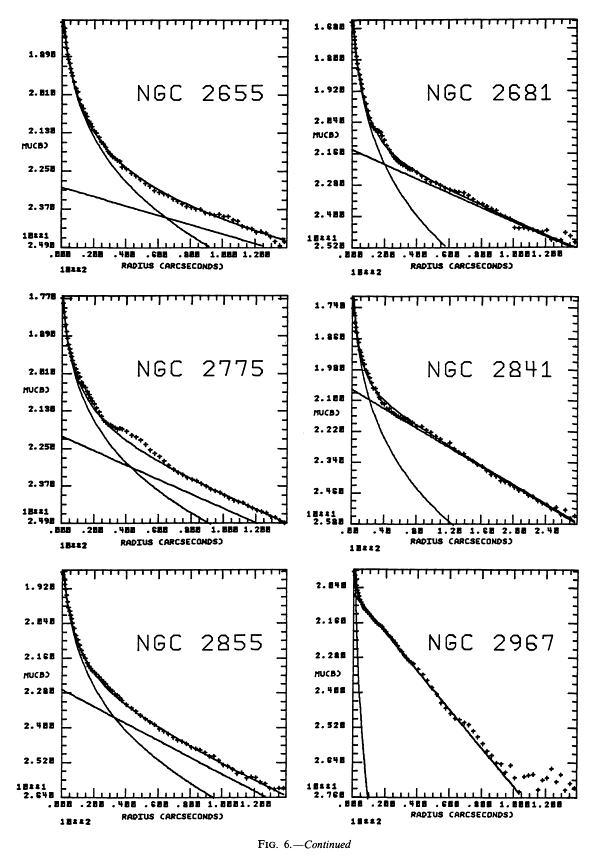Azimuthally averaged surface brightness profiles for some spiral galaxies studied by Boroson (1981 ApJS 46 177). The solid lines are a deVaucouleurs law and an exponential law together with their sum.


Full 2-D bulge-disk separation for NGC 214. Left is a B image of the galaxy. Center is the best-fitting combination of bulge (deVaucouleurs) and disk (exponential) components, projected by the same inclination angle. Right shows the residual image, which shows non-axisymmetric features, such as spiral arms. The oval is the region over which the fit was done. Tick marks are 10 arcseconds. [Fig 4.49 in BM, data from R. de Jong].
In principle, 2D fits are better since the disk and bulge have different intrinsic shapes and so project differently. In practice both 1D and 2D decomposition is often rather uncertain.